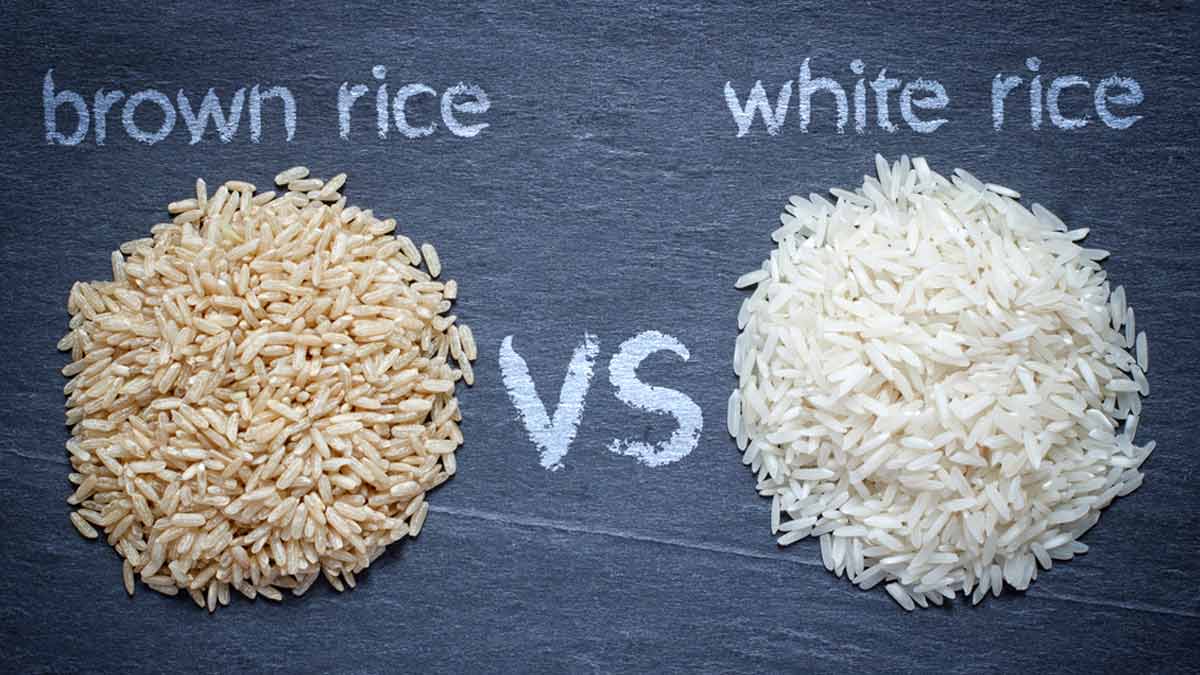
Rice is one of the most staple and traditional foods in India. It is eaten with curries, vegetables, dals, gravies and so on. It is cooked in several styles and with diverse flavours in it, most famous being Biryani. Rice is a starchy cereal that grows annually and most of its consumption is in East and Southeast Asian countries.
Table of Content:-
When it comes to nutrition, there has been a debate on rice consumption and its types. In this article we will explore brown rice and white rice and understand which is healthier. OnlyMyHealth team interacted with Dhara Mavani, Executive-Nutritionist, Cloudnine Group of Hospitals, Navi Mumbai.

Nutritional Difference
Pointing out the nutritional difference between white rice and brown rice, Mavani said, “White rice is processed rice whose bran, germ and husk is expelled. It’s the richest source of carbohydrate, thiamine and phytate. Whereas, brown rice is unrefined and the outer part of the husk is not removed. This retains most of the essential nutrients like carbohydrates, magnesium, phytate and fibre.”
Glycemic Index
As per Harvard T H Chan, the sugar release after eating brown rice is lower than that with white rice. Hence, it is advisable for people with type 2 diabetes to consume brown rice. Mavani said, “It should be noted that eating vegetables with rice will help to reduce the meal's total glycemic load, which will aid to lessen the chance of a sugar rise.”
Also read: How Does A Low Glycemic Diet Help in Clearing Pimples & Acne
Good Fats
As per Mavani, brown rice is higher in essential fatty acids as compared to white rice. The fatty acids in brown rice include monounsaturated fatty acid, which helps in reducing cholesterol and maintaining heart health.

Fibre Content
Being a whole grain, brown rice has insoluble fibre which can protect you against a number of comorbid illnesses. “It aids in the prevention of diseases like hyperlipidemia and coronary artery disease because of its ability to bind cholesterol. Additionally, the presence of insoluble fibre promotes satiety, which aids in weight management. It also lessens sugar surges, which benefits people with glucose-impaired illnesses like diabetes,” Mavani said. Whereas, white rice, on the other hand, lacks additional benefits, such as benefits for diabetes, but does include starch and aids in satiety.
Magnesium
In comparison to white rice, brown rice has a better amount of magnesium than white rice. Explaining the benefits of magnesium, Mavani said, “Magnesium helps in muscle contraction, bone development and other cellular developments.”
Also read: Magnesium May Help Relieve Period Pain: How To Get Optimum Levels

Potassium
Brown rice has more potassium than that of white rice. Mavani advised, “As brown rice has more potassium, patients suffering from any kidney related disorders should consult a dietitian before making any changes in their diet.” As a result, white rice with lower potassium levels is safe to consume under a dietitian’s supervision.
Conclusion
While both the rice has its own nutritional value and health benefits, one should choose the type that suits their health. Concluding, Mavani said, “Consult your dietitian if you enjoy rice and are unsure of the proper way to eat it. Given their knowledge of the possible consequences on health conditions, they can assist you in making the proper decisions.”
Also watch this video
How we keep this article up to date:
We work with experts and keep a close eye on the latest in health and wellness. Whenever there is a new research or helpful information, we update our articles with accurate and useful advice.
Current Version